In this article, we will explain about SSIS Slowly Changing Dimension Type 1 (called Changing attribute).
SSIS Slowly Changing Dimension Type 1: If you want to update the column’s data, mark them as Changing attributes. If your Dimension table members (Columns) are marked as Changing attributes, it replaces existing records with new ones. This type of change is useful. For example, mark this column as a Changing attribute if we want to update the wrongly typed data. Before entering the example, let us see the data inside our Dimension table.
NOTE: SSIS Slowly Changing Dimension Type 1 will update the old records with new values, but it doesn’t maintain the historical data in SSIS.
The following screenshot will show the data inside our [Employees] table. You can get the same data by selecting TOP 10 records from the [DimEmployee] table in the [AdventureWorksDW2014] database.
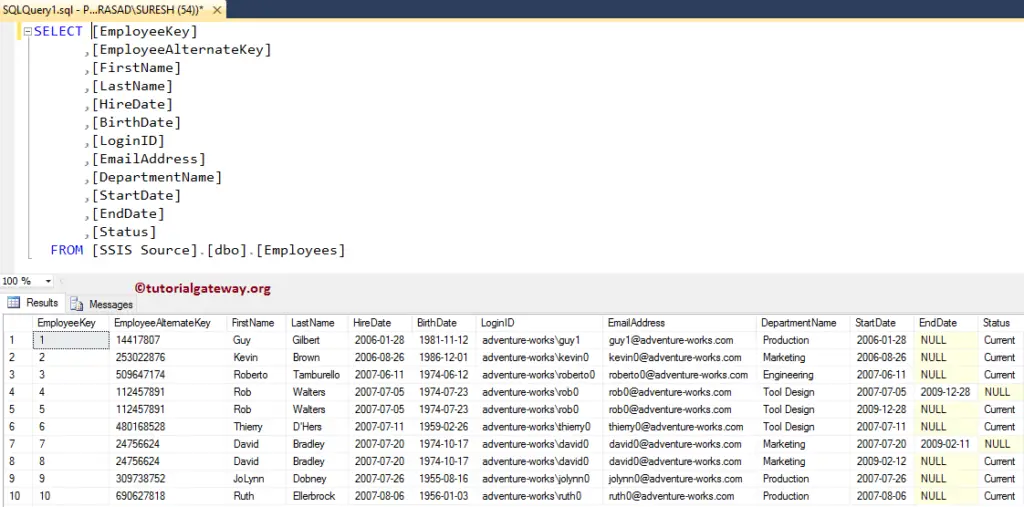
The image below shows the data in the [EmployeeSource] table, and we will update or insert these two records into the [Employees] table.
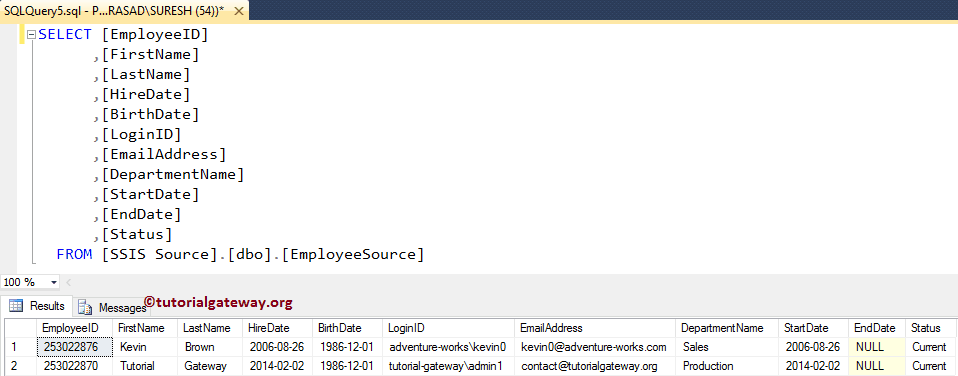
If you observe the above image, the Department Name of the EmployeId (253022876) is different from the original value (it has changed from ‘Marketing’ to ‘Sales’, and We have a new record with EmployeId 253022870. Our task is to insert the new record and update the Department Name of the second record.
SSIS Slowly Changing Dimension Type 1 example
STEP 1: Open BIDS and Drag and drop the data flow task from the toolbox to the control flow. Next, name it SSIS Slowly Changing Dimension Type 1.
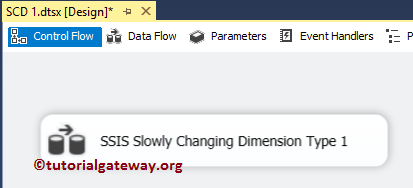
Double click on it will open the data flow tab.
STEP 2: Drag and drop OLE DB Source, Slowly Changing Dimension from SSIS toolbox to data flow region
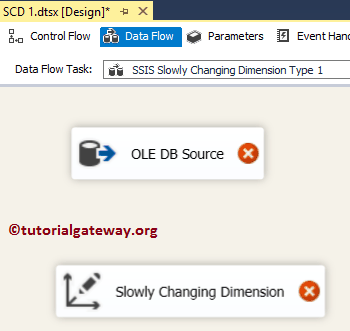
STEP 3: Double click on OLE DB Source. Here we are using the already created OLE DB Connection Manager and EmployeSource table as the Source table.
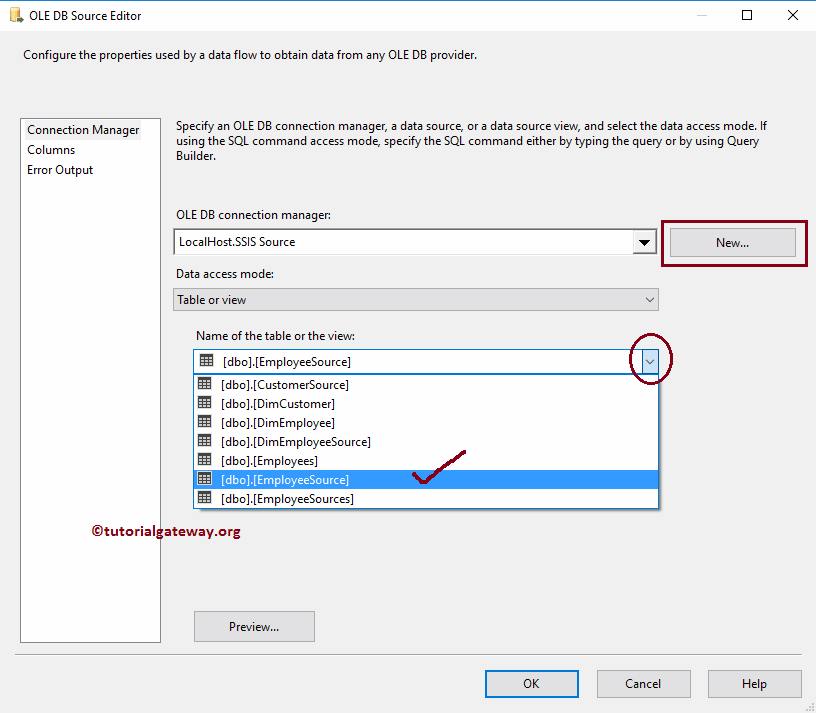
STEP 4: Click on the columns tab to verify the columns. In this tab, we can uncheck the unwanted columns also.
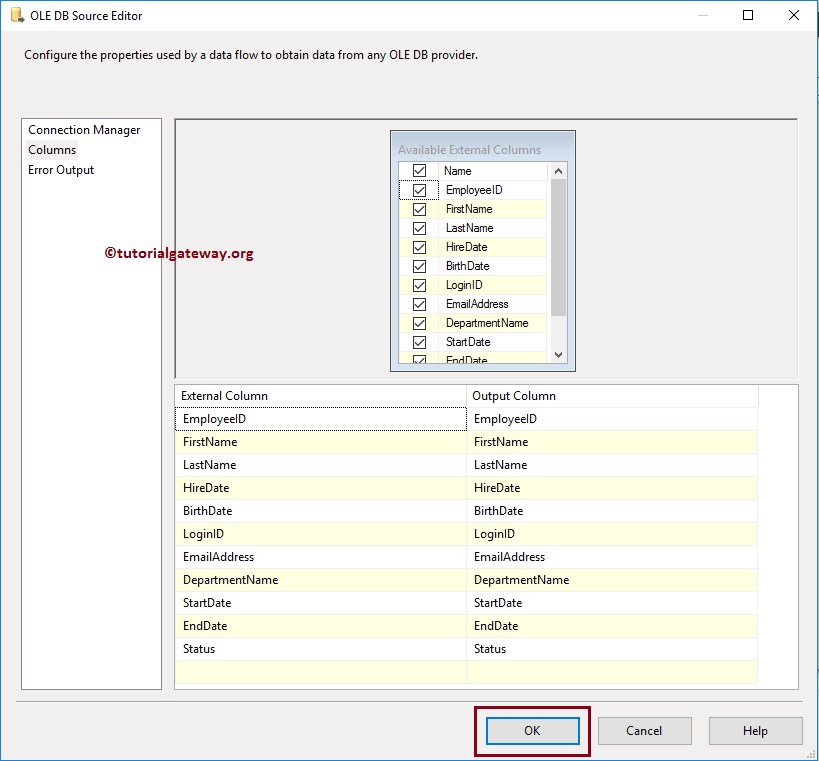
To use the data inside the OLE DB Source, Drag and drop the blue arrow from OLE DB Source to SCD Transformation.
STEP 5: Double-click the Slowly Changing Dimension transformation to open the Slowly Changing Dimension Wizard.
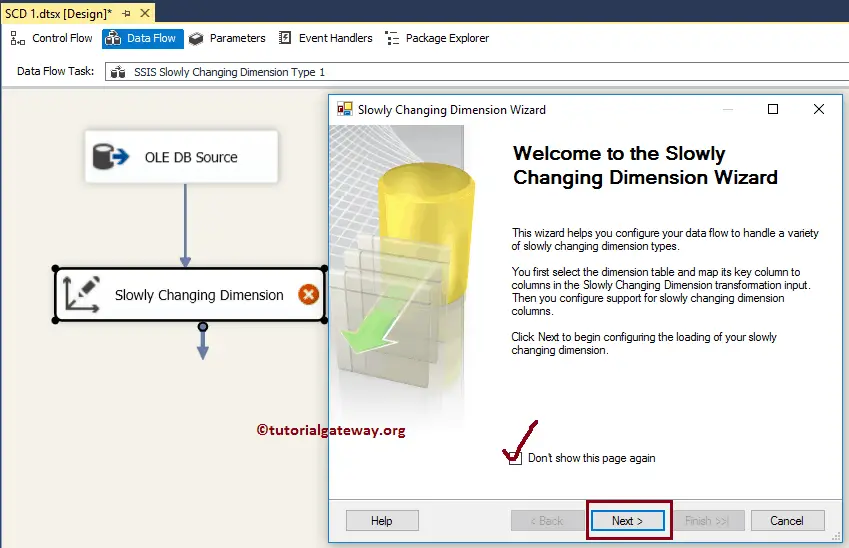
STEP 6: Select a Dimension Table and Keys: This page configures the Dimensional table information.
Connection Manager: This option provides a connection to the dimension table. Here we are using an already created OLE DB Connection Manager that connects with the database present in our Server.
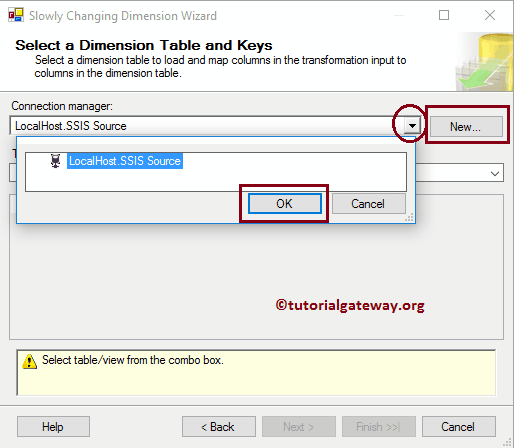
Table or View: Useful to select the Data Warehouse Dimension table or View on which you want to implement a slowly changing operation. Here we are selecting the Employees table.
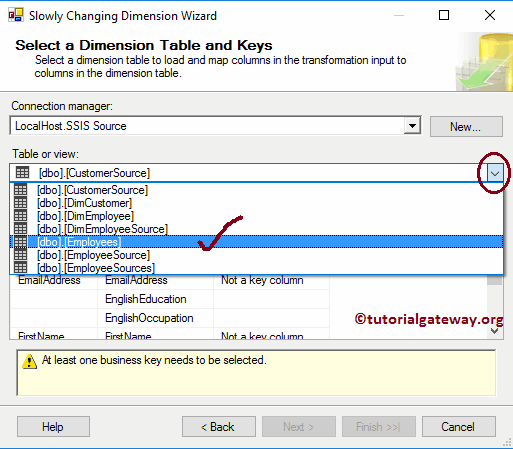
- Input Columns: Columns coming from the OLE DB Source.
- Dimension Columns: Columns available in the Employees Dimension table.
- Key Type: To perform Slowly Changing Dimension 1 or SSIS SCD 1, we need at least one Business key. And we know the Employee Alternative Key is the key column. Please change the Key type from Not a Key Column to Business key.
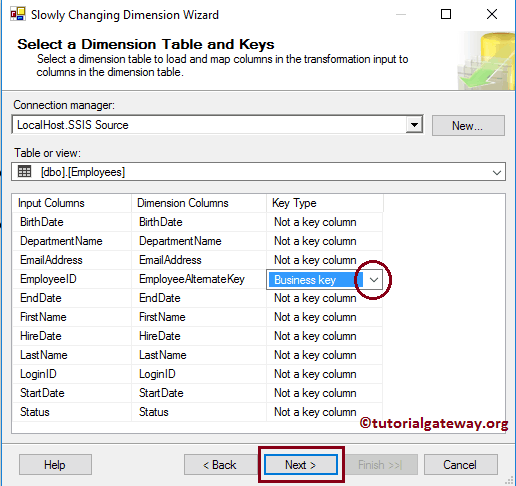
STEP 7 – Slowly Changing Dimension Columns: This is the main page in this whole wizard.
- Dimension Columns: Columns available in the Dimension table will be available in this section. Select the columns that you want to select for Change Type. Here, we choose the Birth date and Email Address columns as Fixed attributes and Department Name as changing attributes.
- Change Type: Select the change type. Here, we keep the default Fixed attribute as change type for a Birth date, Email Address columns, and Department Name as changing attribute.
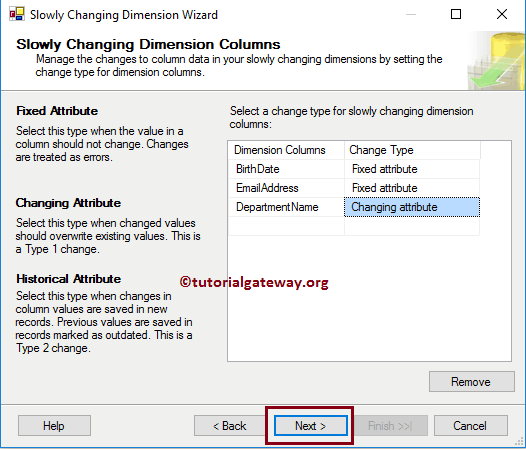
STEP 8 – Fixed and Changing Attribute Options: This page has two options, and we already explained the first option in the Slowly Changing Dimension Type 0 article. We will explain the second option in the next article.
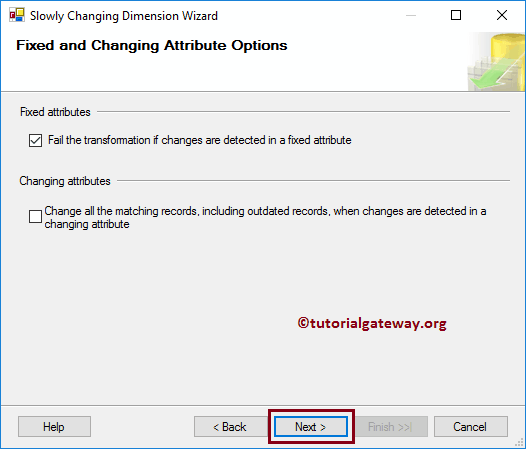
STEP 9 – Inferred Dimension Members: This option is discussed in the Slowly Changing Dimension Inferred Dimension article. For now, we are de-selecting this option and clicking the Next button.
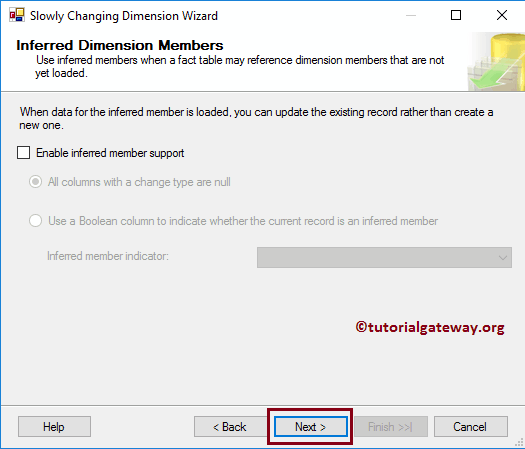
STEP 10 – Finish the Slowly Changing Dimension Wizard: Click the finish button to finish configuring the SSIS Slowly Changing Dimension Type 1
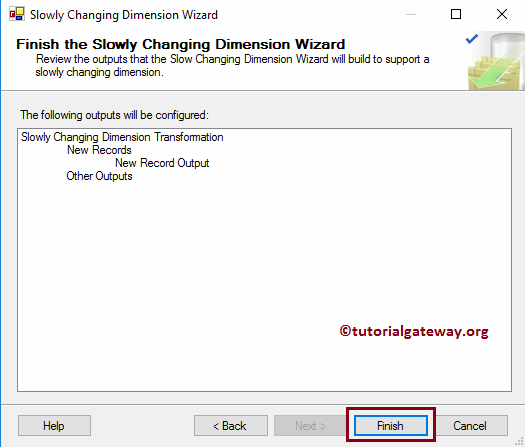
Once you click on the finish button, our Data Flow automatically changes. If you observe the below screenshot, it added the OLE DB Destination to insert new records into the Dimension table and OLE DB Command Transformation to update the existing Old records with new data.
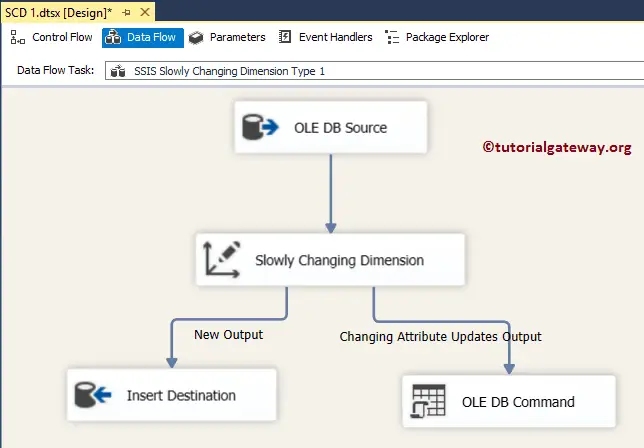
(Optional Step): Let us double-click on the OLE DB Destination to check the automatically created destination (table name and connection manager setting and mappings).
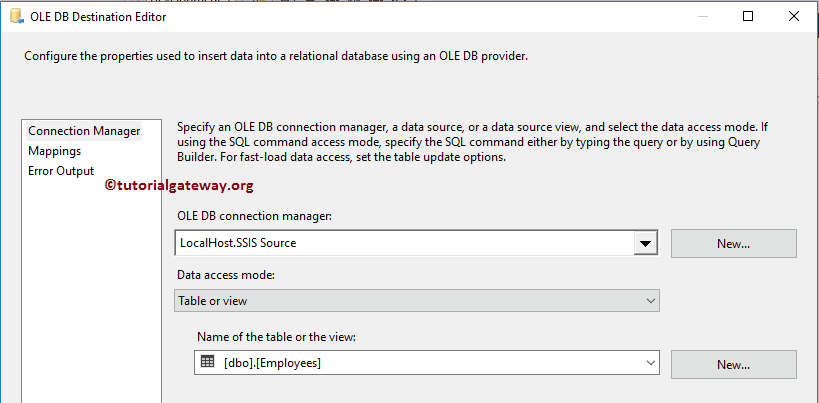
(Optional Step): Let us double-click on the OLE DB Command Transformation to check the Update statement that created automatically.
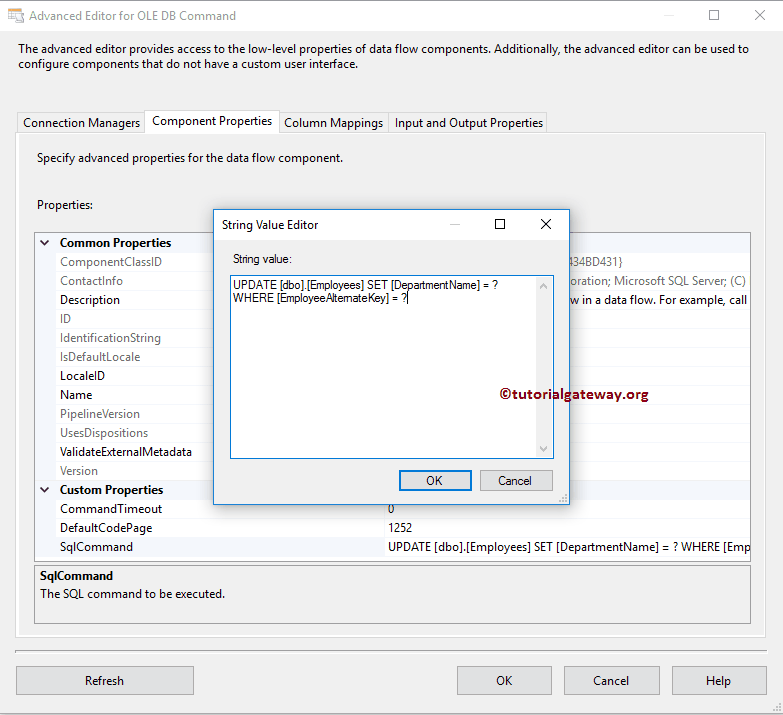
Click OK to finish our SSIS Slowly Changing Dimension Type 1 package design. Let us run the package.
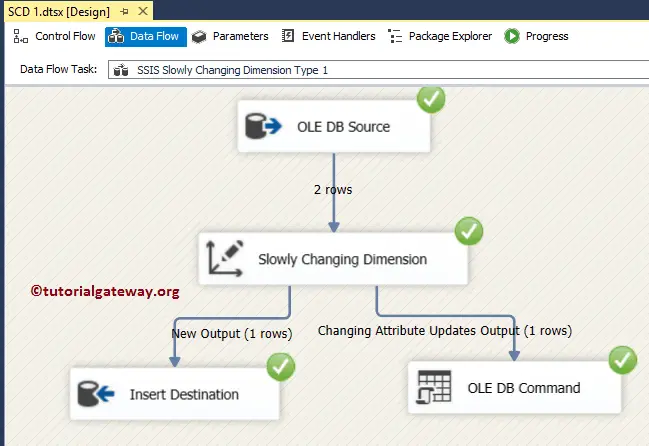
From the above screenshot, you can see that two rows are coming from the OLE DB Source. One row is inserted, and the other row is updated.
Let’s open the SQL Server Management Studio and check the results. If you observe the below records, our package added a New record of Employee Alternative key 253022870. And we have also updated the department name of Employee Alternative key 253022876.


Comments are closed.